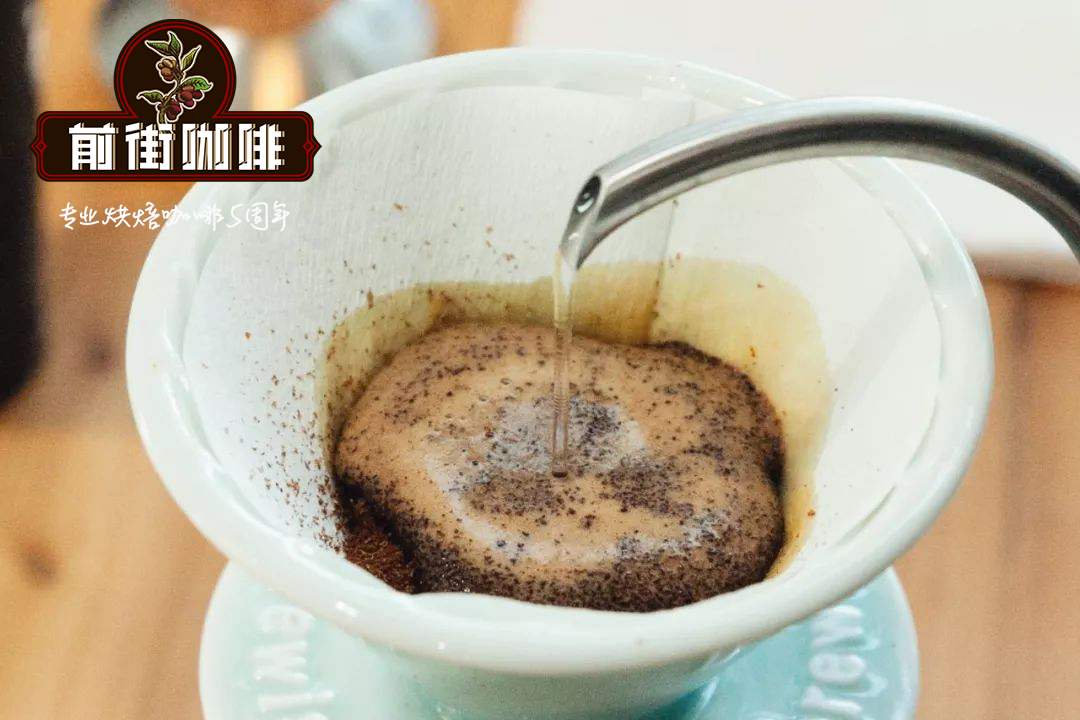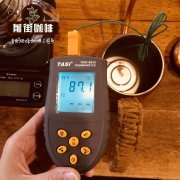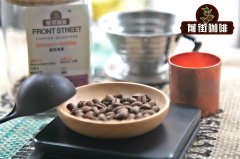Hand coffee step diagram steaming _ hand coffee with which coffee bean steaming effect is the best?

Professional coffee knowledge exchange more coffee bean information please follow the coffee workshop (Wechat official account cafe_style)
As for the matter of "stew", some books say that when the coffee powder expands when it comes into hot water, the coffee powder on the surface becomes a "lid", and the lid is of course stewed.
As for the matter of "steaming", some people say: when coffee powder meets hot water, the gas in the coffee will be discharged upward, and there is hot gas going up, of course, steaming.
Each has his own opinion. In short, the process of making coffee by hand does not need an extra lid.
"steaming": pre-soaking
When it comes to "stewing", the first thing we think of is hand-brewed coffee. When it comes to pre-soaking, you don't think so.
Pre-soaking refers to the beginning of the brewing process, first soaking all the coffee powder with a small amount of hot water, after infiltration, and then adding hot water to brew the coffee.
The method of "steaming" is the same as that of pre-soaking, but the purpose of "steaming" is not just pre-soaking.
The purpose of "stewing"
1. Help exhaust
Coffee beans in the roasting process from raw beans to ripe beans will undergo a series of chemical reactions and physical changes, after a certain degree of roasting, coffee beans will accumulate a large amount of gas (most people think it is carbon dioxide, some people say it is other gases).
A certain degree of baking refers to the degree of baking, which simply means light baking, medium baking, deep baking and so on. (in general, lightly roasted coffee beans accumulate less gas. )
The gas in coffee will not only affect the flavor and taste of coffee, but also affect the extraction. Generally speaking, roasted coffee beans will be flushed for a few days. For gas-rich beans, we call these days the "awakening period", and for lightly roasted beans, we call these days the "ripening period".
When I personally drink coffee that has been baked for 12 hours, I always feel "dry". This feeling is like wearing thick clothes in a fully heated room in winter, not so hot as to sweat, but also unbearably hot.
The gas inside the hand-brewed coffee beans is released in different ways.
One is natural release: coffee beans are put into a bag with an one-way valve, and the beans exhaust themselves. Therefore, stale coffee beans contain less air.
Just like the room is equipped with windows, you cook in the house, the aroma of the food will float out through the window. When the aroma is over, it no longer drifts away.
One is grinding exhaust: the whole coffee beans are turned into coffee particles and the exhaust speed is accelerated.
It's like cooking outdoors, the aroma spreads quickly and floats far away.
One is to soak the coffee powder in hot water to help exhaust (one of the effects of steaming): coffee beans become dehydrated during roasting, and coffee particles with low moisture content become more absorbent when they come into contact with water. After the coffee powder absorbs water, there is no more space, and the gas is forced out.
When we hand-feed water for the first time, we will see the coffee powder expand, which is the process of exhaust.
Therefore, the expansion of coffee powder with high baking degree is high, the expansion of freshly baked coffee powder is high, the expansion of coffee powder is high when infiltrated with ultra-high water temperature, the expansion of finely ground coffee powder is high, and the expansion of coffee powder with more powder is high.
two。 Open the water passage.
Hand-brewed coffee is mainly osmotic extraction, and water flows through the coffee powder, bringing out the aromatic substances in the coffee.
If the water cannot pass through the coffee powder layer for a long time, it may lead to retention, thus bringing out substances that are not conducive to the taste and taste of the coffee.
When the hot water infiltrates the coffee powder, the coffee powder absorbs water, and the gap between the coffee particles becomes larger, and the water can pass smoothly through the coffee particles.
3. Realize pre-soaking
As soon as the coffee comes into contact with water, the extraction process begins.
Water will dissolve the water-soluble substances in the coffee, the premise of dissolution is that the coffee powder is all soaked and leaves a certain amount of time for the water to dissolve.
When the amount of water is insufficient during pre-soaking, the upper coffee powder will be soaked while the lower coffee powder will be dry, resulting in uneven extraction.
If the amount of water is too large during pre-soaking, the water will flow directly from the coffee powder, and this part of the water has not been extracted.
A good pre-soaking will make the coffee extraction more uniform.
When it comes to uniform extraction, I think of an example that may not be appropriate, but it can help enthusiasts imagine: when we use hot water to flush powdered food, if we first stir fully with a small amount of water, and then add the remaining water, the paste will not agglomerate, which means that the mixture is well mixed.
Pay attention to "stewing"
If you want to achieve the purpose of stewing, what should you pay attention to when injecting water?
As we said earlier, pre-soaking is used: soak all the coffee powder with a small amount of hot water.
Stewed water injection:
A small amount of ◆: just soak all the coffee powder.
The water absorption of coffee beans with different roasting degrees is different: less water loss in shallow baked beans, low water absorption, more water loss in deep baked beans, and high water absorption.
Generally speaking, 1 gram of coffee powder absorbs water about 2ml.
According to the amount of powder and the degree of roasting, the amount of stewed water is about 1-2 times the weight of coffee powder. For example, I make moderately roasted coffee, 15 grams of powder, injected with 18 grams to 20 grams of water, can soak all the coffee powder.
◆ uniform: all coffee powder is soaked and no water column is formed.
If the water is injected unevenly, it will cause a lot of water in some areas (water flows down in the form of a water column from the middle of the coffee powder, or a small round hole is formed in the middle of the coffee powder, bubbling upward), and there is no water in some areas (some coffee powder is still dry).
◆ gentle: our goal is to infiltrate and make it dissolve, so just spread the water gently over the coffee powder. Pour water into the stew to keep the spout as close to the noodles as possible.
Calculation of steaming time:
◆ method 1: use a timer to calculate the steaming time from the first drop of water in contact with coffee powder.
◆ method 2: observe the state of coffee powder expansion and end stewing when the coffee powder is no longer expanding or is about to stop expanding. I have calculated that for moderately roasted fresh coffee beans, for example, 15 grams will stop expanding in about 25 seconds.
Last
Whether you want to stew or not depends on your own preferences, cooking habits, the state of the coffee beans, grinding, and the taste you want to present.
The amount and time of stewing should be changed according to the amount of coffee powder and need to be adjusted in time.
Brand recommendation of hand-made coffee beans
Qianjie coffee roasted single hand-made coffee beans are fully guaranteed in terms of brand and quality. And more importantly, the performance-to-price ratio is extremely high, a pack of half a pound 227 grams, the average price is about 80-90 yuan. According to the calculation of 15 powders per cup of coffee, 15 cups of coffee can be made in a bag, which costs only about 6 yuan per cup, which is very cost-effective for coffee shops to sell dozens of yuan a cup.
Qianjie coffee: Guangzhou bakery, the store is small but a variety of beans, you can find a variety of unknown beans, but also provide online store services. Https://shop104210103.taobao.com
Important Notice :
前街咖啡 FrontStreet Coffee has moved to new addredd:
FrontStreet Coffee Address: 315,Donghua East Road,GuangZhou
Tel:020 38364473
- Prev

Relationship between freshness and brewing of hand-made coffee beans _ recommendation of freshly roasted hand-made coffee beans
Professional coffee knowledge exchange more coffee bean information please pay attention to the coffee workshop (Wechat official account cafe_style) there are many friends just come into contact with hand-brewed coffee should also have the same trouble with me, so many varieties would like to try, how to brew hand-brewed coffee beans? First of all, let's take a look at what the bean bags provide us with cooking information, and give us a chestnut.
- Next

How to drink hand-made coffee _ how to adjust hand-made parameters _ price report of hand-brewed coffee beans
Professional coffee knowledge exchange more coffee bean information please follow the coffee workshop (Wechat official account cafe_style) then you will always think, obviously follow the steps step by step, the hand-made coffee is not good enough! Why is it so hard? There are many reasons: water quality, grinding, manipulation, and water temperature are all variables. 1. Control the flow of water and learn about the secret market of the construction of hand pots.
Related
- Beginners will see the "Coffee pull flower" guide!
- What is the difference between ice blog purified milk and ordinary milk coffee?
- Why is the Philippines the largest producer of crops in Liberia?
- For coffee extraction, should the fine powder be retained?
- How does extracted espresso fill pressed powder? How much strength does it take to press the powder?
- How to make jasmine cold extract coffee? Is the jasmine + latte good?
- Will this little toy really make the coffee taste better? How does Lily Drip affect coffee extraction?
- Will the action of slapping the filter cup also affect coffee extraction?
- What's the difference between powder-to-water ratio and powder-to-liquid ratio?
- What is the Ethiopian local species? What does it have to do with Heirloom native species?

